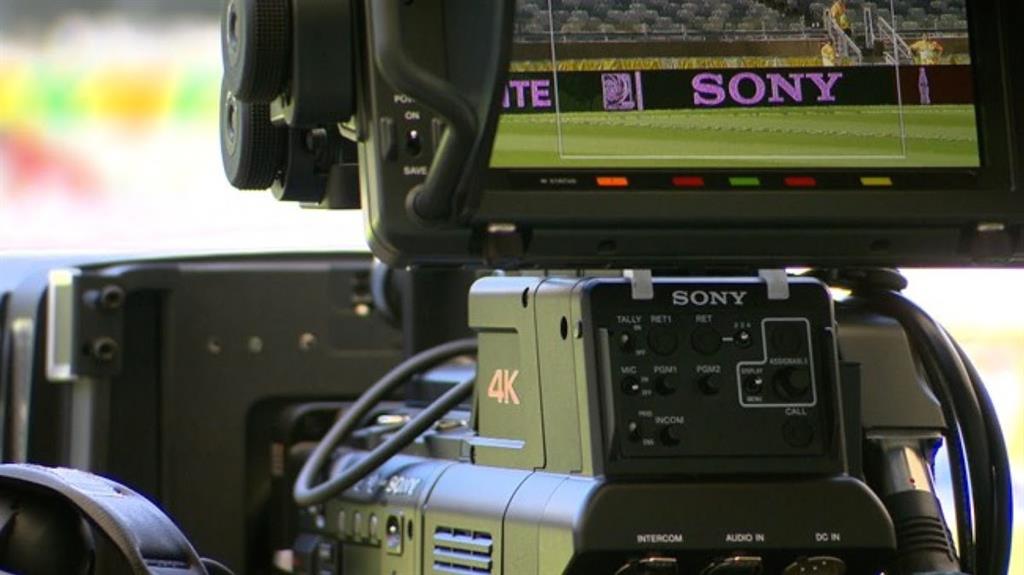4K at IBC2014: Hurry Up & Wait
IBC is always a good bellwether of what keeps the great and the good in the industry up late at night, and one of the interesting factors in looking at the conference programme this year is the relative lack of 4K content. Compared to the stereo 3D hysteria, or even the long, drawn-out campaign that sought to upgrade the industry from SD to HD, 4K in 2014 is making comparatively little fuss.

Partly that’s because it’s considered such a done deal. Advance glimpses of the Exhibitor’s wares on the IBC show floor show the format expanding, almost by osmosis, into every available niche in the production chain. And, at the other end of the equation, there is plenty of optimism abroad that the public rollout will now possibly have occurred in time for the next global sporting circus that will be the Rio Olympics.
Partly that’s because the 4K trials from the World Cup out of Rio’s Maracanã Stadium went so well. With limited cinema distribution added to the mix at a late stage, the joint HBS/Sony/Globo effort proved that most of the issues surrounding lensing etc. have been consigned to the history books, and that the format is well and truly production ready. But mainly, it’s because major media companies are jockeying for position in the newly converging living room and want the market to be ready and receptive.
4K has long been held to be one of the major unique selling points of the Internet media players who they hope can sell suitably up-rezzed content to a subscriber base hooked up to fat enough pipes to receive it (though finding that outside the world’s cities is proving to be something of a challenge; even in the uber-connected US average bandwidth speeds are only just capable of sustaining a HD stream).
But broadcasters are catching up fast. The BBC, for example, used the Commonwealth Games in Glasgow to investigate both HEVC-driven IP-specific and hybrid IP/DTT Ultra HD workflows.
The IP network features 100Gbps connectivity in three cities, Glasgow, Salford & London via the state-of-the-art Janet network at 100Gbps. Onwards connectivity to other sites is pegged at either 40Gbps or 10Gbps, most of which is running over dark fibre optic links (ranging between 1km and 43km). Data is being transmitted via source-specific multicast to bump up efficiency, which sees a receiver only accept packets originating from a specific, requested source.
And while the BBC has stated that it sees IP very much as the future of broadcast, it is also pushing the DTT network to its limit in certain areas to transmit 4K, using the DVB-DASH profile to test transfer rates of up to 35Mbps.
Get the TV Tech Newsletter
The professional video industry's #1 source for news, trends and product and tech information. Sign up below.
Then there is the recent acquisition of Sky Italia and Sky Deutschland by BSkyB, and its effective creation of a Sky Europe, to consider. All three broadcasters have conducted 4K trials in the past year. Not only do the economies of scale make investing in 4K kit attractive — and it should be remembered that, in terms of programming budget, the new company’s £4.6 billion makes it Europe’s most powerful commissioning broadcaster — but it gives BSkyB’s Project 2016 set-top box development team a definite steer.
Project 2016 was already set to downplay — some reports even say ditch — satellite connectivity in favour of IP, as well as punting PVR functionality and a lot more besides into the cloud. Due to hit the market, as the name suggests, in 2016, it was always destined to be powered by an HEVC chipset, the only real unknown now being whether it will feature a hefty onboard drive as well to at least cache the many GBs of data a 4K movie will occupy.
There is though a growing body of opinion — and Sky Deutschland has been firmly in this camp in the past — that this current Phase 1 of UHD is neither the time nor the place for a major launch and that the industry is better off waiting for Phase 2 where the higher resolutions are joined by higher frame rates and higher dynamic range. And this camp got a major boost when no less a body than the EBU published TR 028, EBU POLICY STATEMENT ON ULTRA HIGH DEFINITION TELEVISION (very much their caps) in mid-July.
This went so far as to state that Phase 1 Ultra HD will “be of limited success in broadcasting”, and even that it would be better to add the higher framerate, dynamic range, improved audio etc to HD and “that an enhanced 1080p format be developed for broadcasting.”
Whether that will happen or not is open to question, but this is where you do see 4K peeping out through the gaps at IBC; as part of a debate over whether the timing is indeed right, whether people do indeed want it now; or whether we should be waiting until we can release a far more capable format onto the world.
Japanese broadcaster NHK, for one, isn’t waiting. While the three 4K matches from the World Cup grabbed the headlines, it quietly and efficiently captured and transmitted nine matches in 8K back to Japan. What is the length of 4K’s window of opportunity? Now that is a question that might keep those making decisions about the future of the business awake at night.

